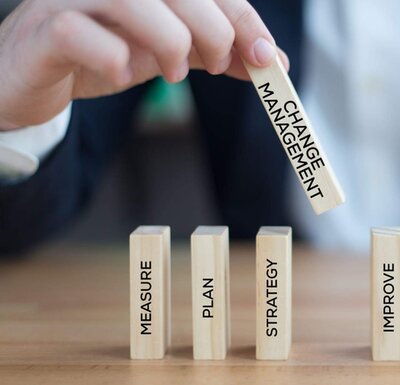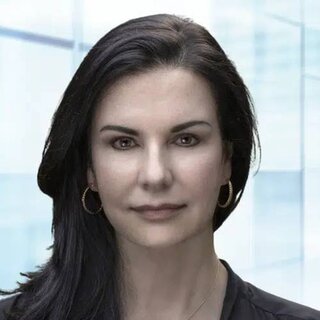The company’s planning system was functional but dated. While it had served its purpose in the past, it lacked the agility and visibility needed for modern, cross-functional retail operations. Critical processes — from financial planning to demand forecasting to supply alignment — were fragmented across teams and tools, creating duplication of effort and inconsistent views of performance.
To move forward, the company enlisted the guidance of Columbus Consulting and launched a Planning Transformation Initiative with three clear objectives:
- Assess the current state — document existing processes and pain points.
- Benchmark against industry best practices — identify where leading retailers had evolved.
- Design a future-state roadmap — define an integrated planning process supported by enabling technology and practical sequencing.
For decades, this multi-brand retailer has stood as a benchmark of timeless style and craftsmanship. With more than a thousand styles in its assortment at any given time, the company’s collections reflect a balance of design, quality, and heritage. Its customers value consistency — in form, function, and aesthetic — and its associates embody that same dedication. Many have spent over a decade committed to the company, helping preserve its identity even as the marketplace around them evolved.
While the brand was successful, retail changed faster than the systems and processes that supported it. As the company expanded across wholesale, retail, and e-commerce channels, the complexity of managing multiple brands, categories, and over a thousand wholesale accounts began to outpace its tools. Excel workarounds had become the unofficial planning platform, and processes that once worked now required brute force and institutional knowledge to execute.
It was time to evolve — not away from the company’s legacy, but toward a future that honored its heritage while embracing modern retail discipline.
Before new tools or processes could succeed, there was a deeper truth to confront: the hardest part of transformation wasn’t the technology — it was the people.
Nearly everyone agreed things needed to change, yet many believed others needed to change more than they did. That insight crystallized the first real challenge: change management wasn’t a workstream; it was the work itself.
Through open communication, involvement in design sessions, and visible leadership sponsorship, the company began to replace resistance with engagement. The mindset shift created the foundation for lasting adoption — and trust.
The Challenge: Change Starts with Mindset
The History: Thousands of SKUs-Multiple Channels-Dated Systems
The Opportunity: A Strong Foundation Needing Renewal
The Approach: Uncovering the Gaps (When Good Processes Outgrow Their Tools)
The Solution: PHASE ONE
Several core challenges stood out:
Key elements included:
Designing the Future--Building an Integrated Planning Framework
Implementation: Finding the Right Technology
The Turning Point: Sustainable Transformation
With a newly aligned commitment to change, the organization began the process of identifying where they were and where they needed to be. The assessment revealed what many long suspected: the company’s processes worked — but only through muscle and perseverance. Planning calendars existed but weren’t connected. Financial targets were set but not easily reconciled with demand or supply. Teams relied on multiple spreadsheets to bridge system gaps, and collaboration depended more on relationships than data visibility.
- Siloed functions: Merchandising, finance, and supply chain each operated independently.
- Limited visibility: Wholesale and retail plans were not integrated.
- Manual workarounds: Excel filled gaps but introduced inefficiency and risk.
- Misaligned strategy: The company’s overarching goals weren’t consistently translated into measurable actions.
The company had succeeded through commitment and institutional knowledge, but its next stage of growth required integration and process discipline.
- Merchandise Financial Planning (MFP): Aligning sales, margin, and inventory targets across all channels.
- Refined S&OP Process: Strengthening cross-functional integration of demand, supply, and financial planning.
- Cross-Functional Milestones: A synchronized planning calendar (annual, seasonal, monthly, weekly) to drive consistency.
- Modern Technology: A new planning platform enabling real-time data, visibility, and scenario modeling.
Each recommendation was practically sequenced to deliver foundational wins before layering on advanced capabilities.
Transformation became tangible through a comprehensive vendor selection process that led to the implementation of a new demand forecasting and merchandise planning system.
As with any large-scale initiative, the journey was difficult. It required patience, perseverance, and continuous cross-functional alignment. After 18 months, the system was operational and performing as designed. In parallel, organizational changes aligned roles, responsibilities, and ownership to the new processes.
However, technology alone couldn’t achieve the transformation’s full vision.
Once stabilized, the company recognized that while the system was functioning, true process adoption lagged. Teams were using the new tools, but not consistently aligning to the integrated planning model.
Acknowledging this gap was a pivotal moment of maturity. The company re-engaged Columbus Consulting to lead the next phase — a focus on change management and process transformation.
This phase was not about redoing the work; it was about embedding it — ensuring the new processes and mindset became permanent ways of working.
Knowing that they needed to change to stay relevant and accepting the fact that they were operating with outdated systems and processes, the brand sought to define a clear vision of their future. Leadership articulated what an ideal state would look like and how a modernized end-to-end planning process was inevitable to support their channels and product needs. Leadership focused on defining clear milestones, integrated workflows, and shared accountability across functions.


Elizabeth Elliott
Managing Partner/Board Chair, Columbus Consulting
Transformation isn’t about leaving a legacy behind. It’s about giving it the agility to thrive. When planning, process, and people finally move together, a retailer doesn’t just modernize — it becomes stronger, connected, and built for the future.



Driving Alignment: Leadership First
Sustaining the Change: From Compliance to Commitment
Preserving What Matters Most
The Solution: PHASE TWO
THE RESULTS:
Columbus Consulting worked closely with the company’s leadership and operational teams to rebuild clarity and confidence in the new model. A series of leadership workshops helped define “critical paths of understanding,” ensuring executives didn’t just understand the new process — they believed in it and modeled it.
Leadership alignment was crucial. Without top-level commitment, adoption would not take hold. By demonstrating ownership and engaging directly in solutioning, leaders created the cultural momentum necessary for change to cascade throughout the organization.
Over time, cross-functional workshops, playbooks, and new communication rhythms began to cement the changes. Progress was incremental, but it was steady.
With transparency, leadership sponsorship, and accountability, what began as compliance evolved into true commitment. Teams no longer viewed planning as an administrative task, but as a shared, strategic discipline that connected every part of the business.
Today, the company stands as an industry leader in planning capability — not because of a single system, but because of the alignment between its people, process, and technology.
Through it all, one constant remained: the company’s unwavering commitment to quality, authenticity, and craftsmanship. The goal was never to abandon the values that built the brand, but to equip them for the future.
In doing so, the company proved that legacy and innovation are not opposites — they are complementary forces. The transformation journey has strengthened operations, deepened cross-functional collaboration, and renewed the company’s identity as a brand built to last.

About Columbus Consulting
Columbus Consulting delivers solutions that drive true value and have been transforming the retail, grocery and CPG industries for over two decades. We are a retail consulting company of industry experts. Our approach is simple, if you do it, we do it. We are more than consultants; we are experienced practitioners who actually sat in our clients’ seats. We understand the challenges, know what questions to ask and deliver the right solutions. Columbus offers a unique, consumer-centric approach with an end-to-end perspective that bridges functional & organization silos from strategy to execution. Our specialties include: unified commerce, merchandising & category management, planning & inventory management, sourcing & supply chain, data & analytics, accounting, finance & operations, people & organization and information technology. Let us know how we can help you. To learn more,






